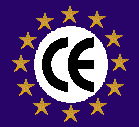|
The directive lists 13 different modules that define the inspection
requirements of both the manufacturer and notified body. Two modules, B & B1, cover design only and have to be used in conjunction with another module
covering manufacture. Modules H,H1 & G cover both design and manufacture. The remaining modules cover manufacture only. The permitted combinations
and usage of these modules is described below.
|
Categor y
|
Normal Route With No QA System
|
Quality Assurance to ISO 9000 series
|
|
Serial Production
|
Unit Production
|
Serial Production
|
Unit Production
|
|
I
|
A
Internal production control
|
|
II
|
A1
Internal production control with monitoring of final assessment
|
D1 Or E1
D1 (QA To ISO 9002) Or E1 (QA
To ISO 9003)
Quality assurance for production, final inspection and testing
|
|
III
|
B
Design examination of type
+
C1
Monitoring of final assessment
|
B1
Design examination
+
F
Product
verification
|
B
Design examination of type
+
E
QA (ISO 9003) for final inspection & testing
|
B1
Design examination
+
D
QA (
ISO 9002)
for Production and Test
Or
H
QA for Design and Production (ISO 9001)
|
|
IV
|
B
Design examination of type
+
F
Product
verification
|
G
Design examination and Inspection during manufacture
& testing
|
B
Design examination of type
+
D
QA (ISO 9002)
for final inspection, testing & manufacture
|
H1
Full QA with design examination and monitoring of final
assessment.
|
|
This is not quite as complicated as it may appear because all the modules are variations of module A
and exist mainly to define the involvement of the Notified Body.
Module A
- Prepare Technical Documentation covering design, manufacture and operation.
- Ensure manufacture conforms with technical documentation
- CE mark
- Draw up declaration of conformity
- Retain all documents for 10 years
The technical documentation should address the essential safety requirements in section one and two of the directive. It should include:-
- Description of the equipment (See section on safety requirements)
- The purpose of the equipment
- Operating pressure and temperature
- Hazard analysis
- Contents:- liquid/gas toxic/flammable/reactive corrosive/erosive
- Flow rates and heat transfer rates if applicable
- Support structure and imposed loadings such as wind and snow/ice
- Fatigue / vibration , Varying pressure, thermal cycling, differential expansion
- Design and manufacturing drawings
- Design drawings should contain sufficient information to perform a
full design assessment and supporting calculations.
- Manufacturing drawings should contain method of manufacture and
all relevant dimensions and tolerances.
- Instructions to explain the design, operation and maintenance of the equipment. They should cover:-
- Intended use
- Fluid quality and maximum impurity levels if relevant
- Avoidance of dangers such as contact with hot surfaces.
- Safety devices required their flow rate and set pressure
- Maintenance/Inspection requirements
- Connection requirements
- Harmonised standards used or justification of the design
- Material appraisal : list all materials used stating why they are
suitable and that they satisfy the directive.
- A list of the ESR's including a brief statement against the ones
that are relevant stating how they have been addressed
- Calculation
- A full set of calculation should be performed to prove that the
design of the vessel is adequate to withstand the design conditions.
- Test Reports
- Material certificates
- Internal inspection reports covering at least the hydraulic test
- NDT reports
- Quality plans, Procedures covering:- manufacturing, NDT, Welding etc, as applicable.
Note
If you are making a pressure vessel and don't know what it will contain or you
don't know if the material being specified to make the vessel is suitable, then you should make this point clear in the technical documentation. Ideally you
should get a written statement from the end user stating that the materials specified are suitable for the item being manufactured.
Module A1 (Inspection Category 2)
This is the same as module A except:-
- Notified body is required to monitor final hydraulic test and examination.
- Welding procedures and welder approval tests must be witnessed by a
notified body or third party organization approved under the directive. The standards used do not have to be EN288 and EN287, they can be
any standard considered appropriate by the Notified Body.
Module B (Inspection Category 3 and 4)
This module considers technical documentation only and has to be used in conjunction with a module covering manufacture such as D, E F and C1. It is split into two modules:-
- B1 Covers the technical documentation for singularly manufactured
units. Any change to the design documentation has to be re-approved by the Notified Body.
- B Covers serially manufactured units and permits some variation in
design without requiring re-approval subject to the discretion of the Notified Body, or as permitted by a harmonized standard.
In addition to approving the technical documentation the Notified Body has to
approve welding procedures, welders and NDT personnel, or check they have been approved.
Module C1 (Category 3)
This module can only be used in conjunction with module B, serially produced items, not B1, and there is no C. Module C1 is basically the same as A1 with the parts covered by B taken out.
Module F (Category 3/4)
This module like C1 must be used with either B or B1. If the items are serially produced then this module can be used in category 4, but if they are
manufactured as single items only category 3. it is similar to A1 except the Notified Body must:-
- Verify qualifications of welding and NDT personnel already approved under module B.
- Verify material certificates
- Check safety devices, if applicable.
Module G (Category 4)
This module is for single items only. its the same as B1 and F except the Notified body performs inspections at various stages of manufacture as they
consider appropriate or as dictated by a harmonized standard. Its the most popular module being used so far and can be applied to any category.
QA Modules
If you have an accredited QA system to one of the ISO 9000 standards then the Notified Body audits your system every 3 years and pays unexpected visits as it considers appropriate.
- D1 is the QA version of A1 for category 2. (ISO 9002.)
- D is similar to D1 but has to be used in conjunction with either B or B1.
If you are serially manufacturing items you can use this module for category 4, but only category 3 for single items.
- E requires QA for final inspection and test. (ISO 9003.)
- H and H1 are full QA covering both design and manufacture. (ISO 9001.)
Next Page > Harmonised Standards
|



